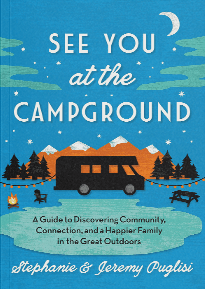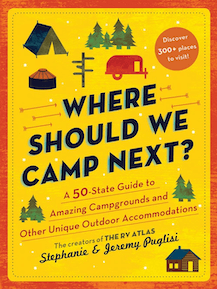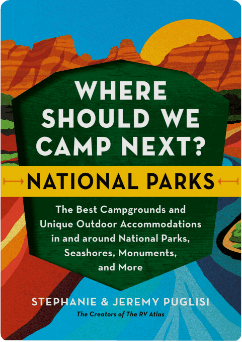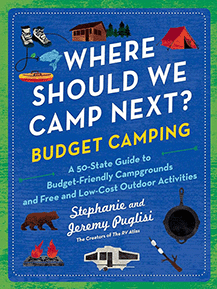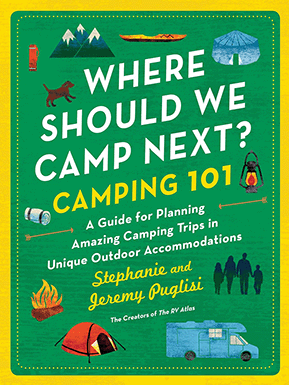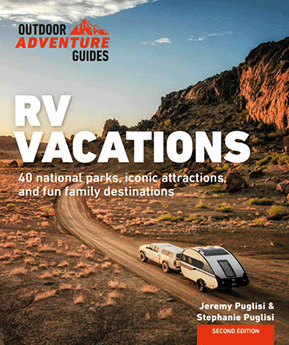Utah is home to some of the most iconic landscapes in the United States, making it a bucket-list destination for RVers. While many know about Utah’s Mighty 5 national parks—Bryce Canyon, Zion, Capitol Reef, Arches, and Canyonlands—the state’s remarkable state parks often fly under the radar. In this guide and corresponding podcast episode (click on the media player above) , Ellen Broude shares all the details of her two-week RV adventure exploring both the Mighty Five and four incredible state parks: Kodachrome Basin, Coral Pink Sand Dunes, Goblin Valley, and Dead Horse Point. From jaw-dropping hikes to serene campgrounds, this journey showcases the best of what Utah has to offer.
Bryce National Park
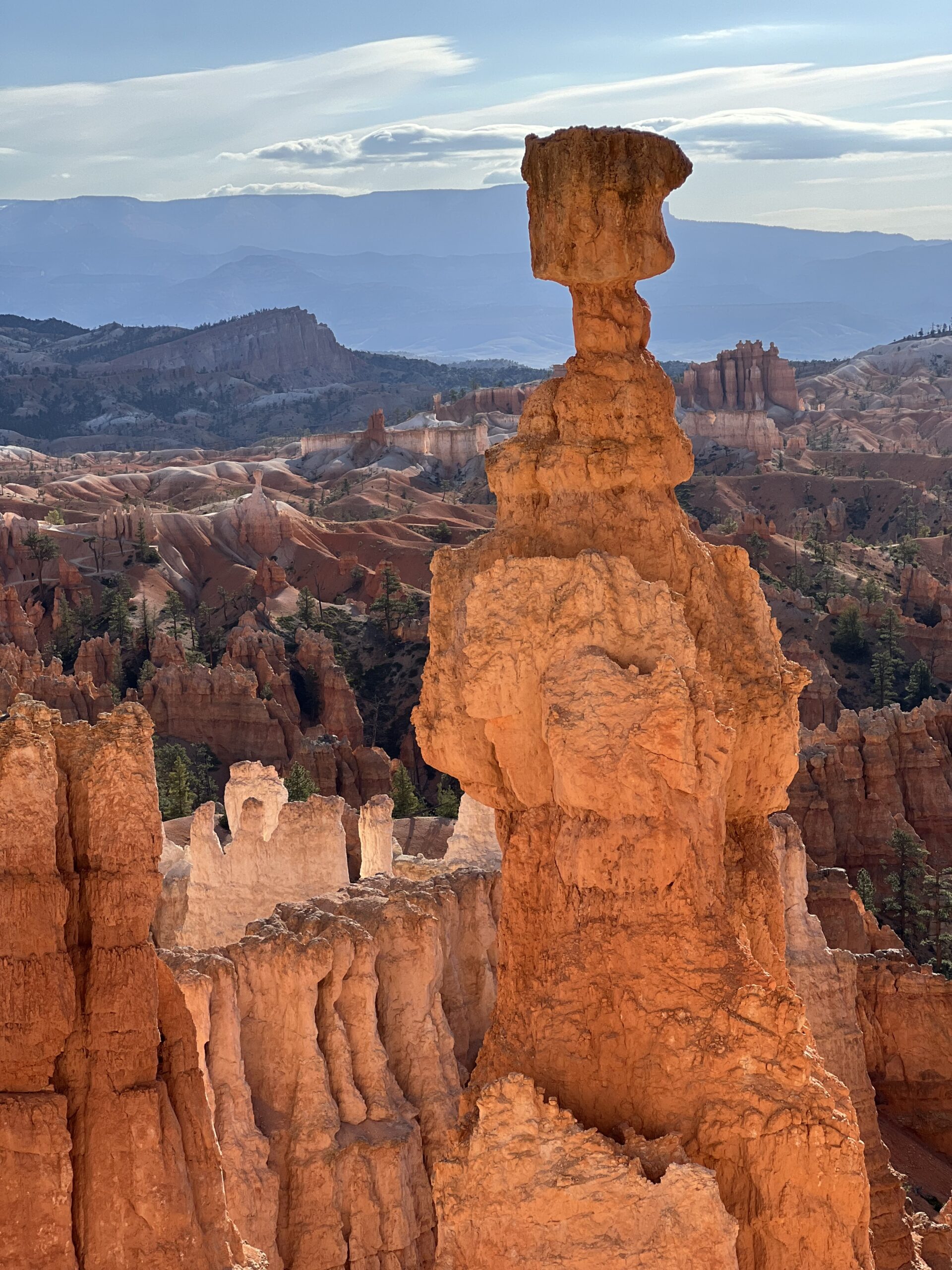
Photo By Ellen Broude
Bryce Canyon National Park is renowned for its otherworldly hoodoos—tall, thin spires of rock shaped by centuries of erosion. Home to the largest concentration of hoodoos on Earth, this park’s dramatic landscapes are particularly breathtaking at sunrise, when the light casts vivid hues of orange and red across the amphitheater. Whether you’re a first-time visitor or a seasoned adventurer, Bryce offers a wealth of unforgettable experiences.
Hikes
- Navajo Loop and Queen’s Garden Trail: This popular 3-mile loop takes you through towering hoodoos and dramatic switchbacks. It’s a moderate hike with stunning views at every turn.
- Sunrise Point to Sunset Point: A scenic 1-mile rim walk offering spectacular views of the amphitheater below. This easy trail is perfect for visitors of all ages.
- Mossy Cave Trail: A short hike leading to a waterfall and a cave, with interpretive signage detailing the area’s history, including the water diversion efforts of early Mormon settlers.
Kodachrome State Park
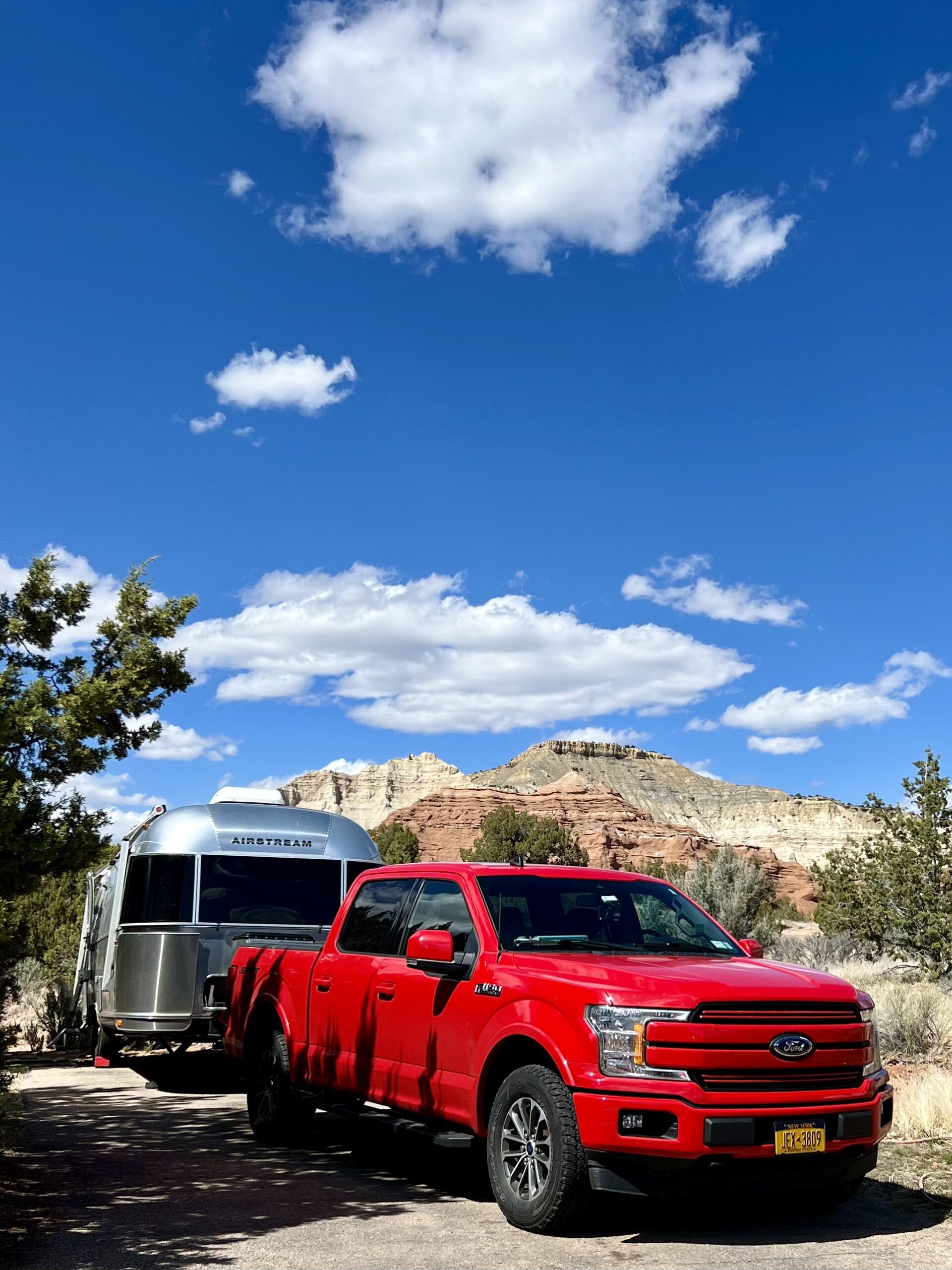
photo by Ellen Broude
Kodachrome Basin State Park serves as a base camp, located just 30 minutes from Bryce Canyon. Named by a National Geographic Society expedition in 1948, this park is famous for its vibrant rock formations and spires that tower against a bright blue sky—a photographer’s dream. This state park is every bit as grand as any of Utah’s Might 5.
Where to Camp
Camp at the Basin Campground, which offers full hookups, clean facilities, and access to stunning hiking trails. On arrival, Ellen opted for an overflow site near the visitor center—a decision she was thrilled with. The site features epic views of the park’s rugged terrain and convenient access to amenities like Wi-Fi and ranger-led programs.
Hikes
- Angel’s Palace Trail: A moderately easy hike with a brief steep section at the start. Once at the top, the trail flattens out, offering panoramic views of the park.
- Shakespeare Arch Trail: Though the arch itself fell in 2019, the trail provides fascinating geological insights and a peaceful hiking experience.
- Willis Creek Slot Canyon: Located within Grand Staircase-Escalante National Monument, this family-friendly hike meanders through narrow, winding slot canyons. It’s a must-see for those in the area.
- Grovenor Arch: A short, paved walk leads to this stunning double arch formation, also part of Grand Staircase-Escalante.
Coral Pink Sand Dunes State Park
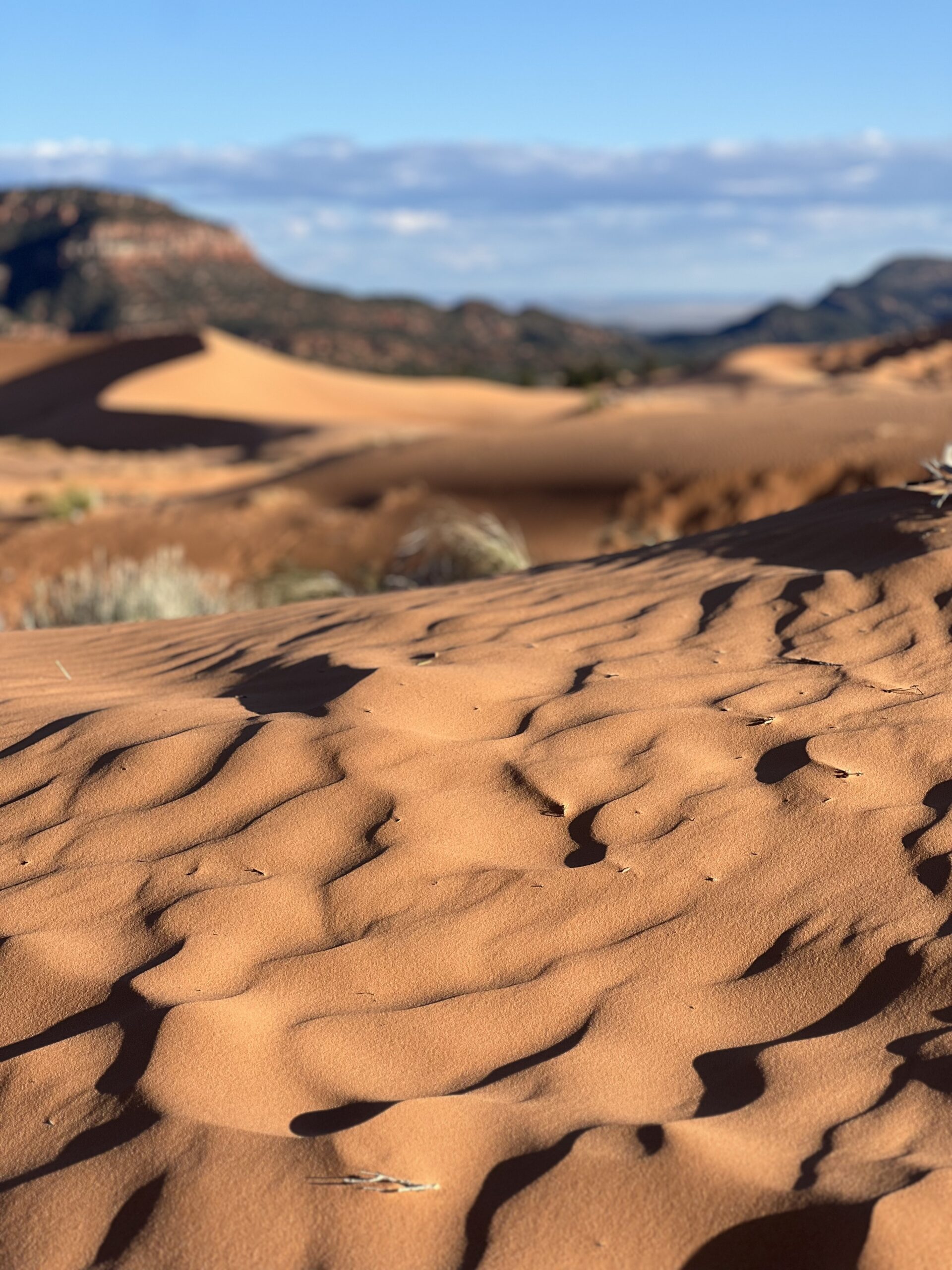
photo by Ellen Broude
Coral Pink Sand Dunes State Park is an impromptu overnight stop for Ellen, and it does not disappoint. Imagine Great Sand Dunes National Park, but on a smaller scale with pink-red sand. The park is a haven for ATV riders, with trails that wind through the dunes. Its full-hookup campground offers great Wi-Fi at the visitor center and easy access to these unique landscapes.
Zion National Park
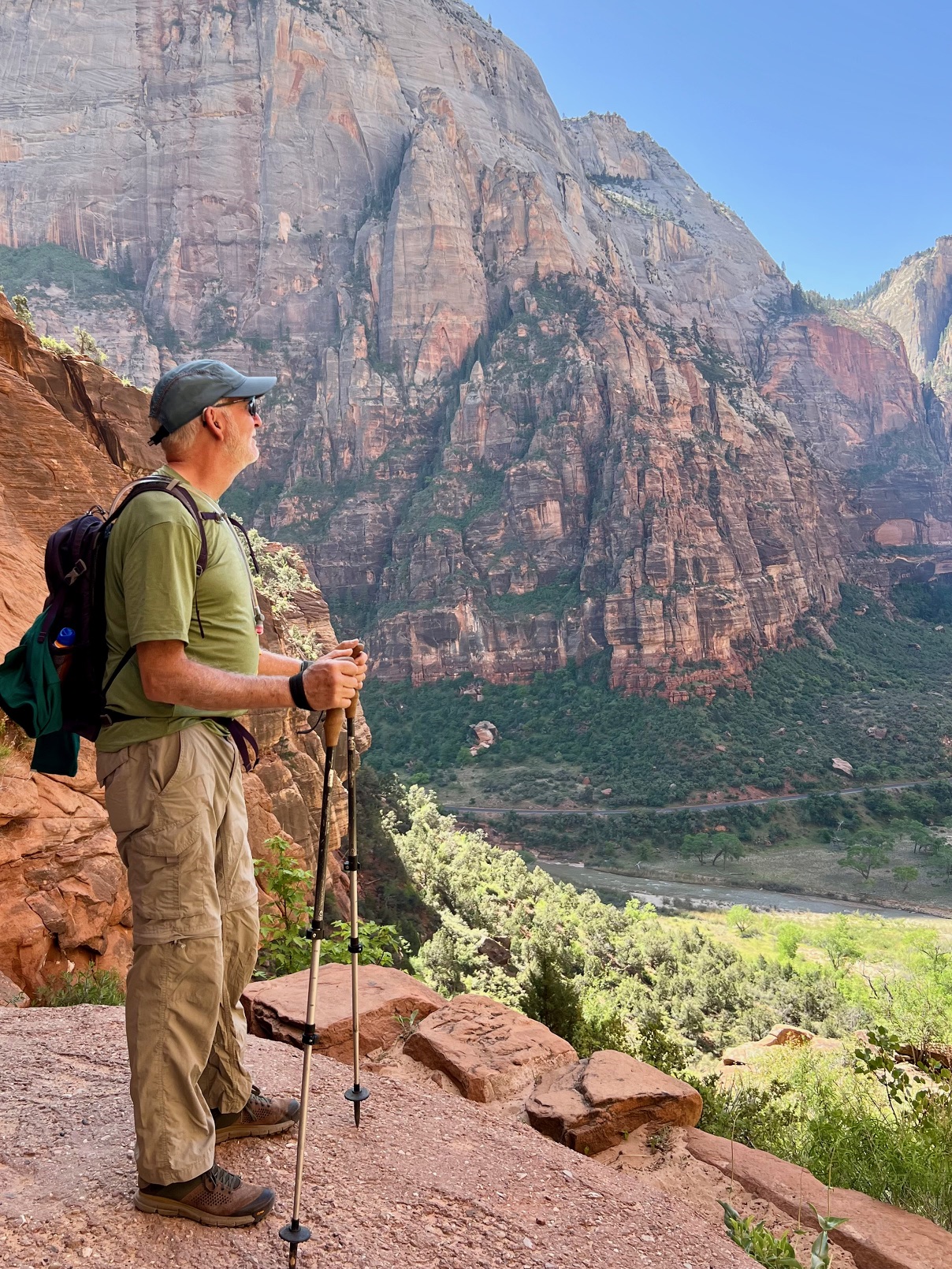
photo by Ellen Broude
Zion National Park is a mecca for outdoor enthusiasts, with its towering red cliffs, narrow slot canyons, and lush river valleys. This park is also home to a rich diversity of wildlife, including mule deer, California condors, and bighorn sheep. Visitors can immerse themselves in the beauty of the Virgin River as it carves through the canyon, creating a lush oasis amidst the desert. However, its popularity means planning ahead is essential. This may be the most crowded of Utah’s Mighty 5 national parks.
Where to Camp
Stay at Zion River Resort, just outside Springdale. The resort’s full hookups, resort-style amenities, and proximity to the park entrance make it an ideal base camp. Note: Local water quality issues mean bottled water is recommended for both humans and pets.
Hikes
- Canyon Drive by E-Bike: Renting e-bikes from Zion Peddler allows visitors to explore the park’s iconic Canyon Drive without relying on the crowded shuttle system. Early morning rentals are a game-changer for avoiding crowds.
- Riverside Walk: This leisurely trail leads to the start of The Narrows and is perfect for families.
- West Rim Trail to Scout Lookout: A challenging hike with dramatic switchbacks and expansive canyon views. It’s an excellent alternative to the infamous Angels Landing.
- Petroglyph Pools Trail: Located on the quieter east side of the park, this trail features ancient rock art and opportunities to spot bighorn sheep.
Capitol Reef National Park
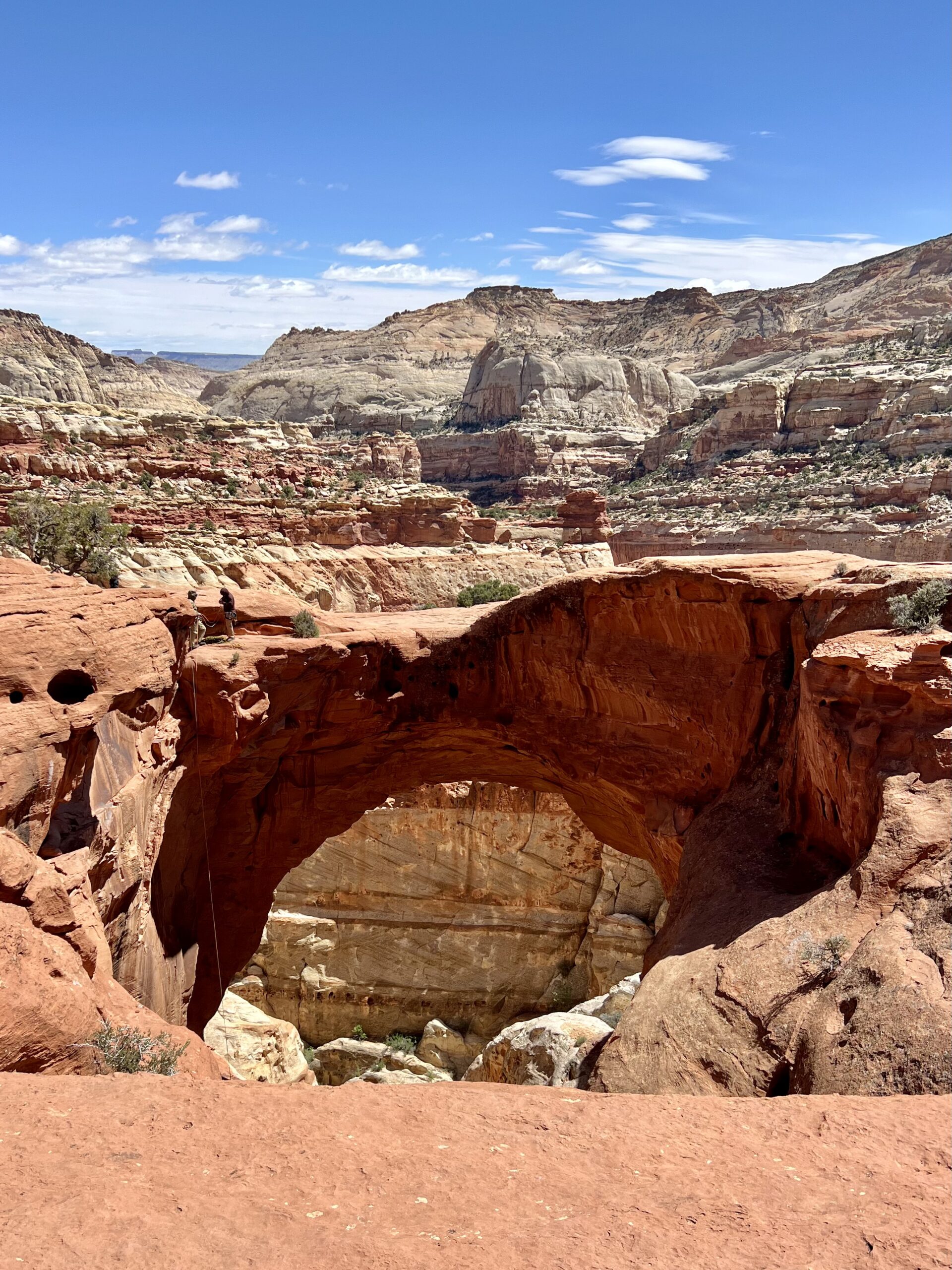
photo by Ellen Broude
Capitol Reef National Park is often considered the most underrated of Utah’s Mighty 5, but it’s a hidden gem with stunning rock formations and a peaceful ambiance.
Where to Camp
Boondock at Beas Flats Road, a spacious BLM area just outside the park. The open space, scenic views, and sense of solitude perfectly complement Capitol Reef’s serene vibe.
Hikes and Activities
- Gifford Homestead: Stop by for freshly baked cinnamon rolls and pies, a delightful treat after a morning hike.
- Hickman Bridge Trail: A moderate 1-mile hike to a natural rock bridge that showcases the park’s striking landscape.
- Cassidy Arch Trail: Named after Butch Cassidy, this hike offers panoramic views and opportunities to watch climbers rappel from the arch.
Goblin Valley State Park

photo by Ellen Broude
Goblin Valley State Park is famous for its whimsical sandstone hoodoos, nicknamed “goblins.” Walking among these formations feels like exploring another planet.
Where to Camp
Ellen scored a last-minute site at the park’s small campground, which featured shaded picnic shelters and breathtaking views. Exploring the goblin field is more like a leisurely stroll than a hike, making it accessible and enjoyable for visitors of all ages. Nearby yurts add a unique lodging option for non-campers.
Arches National Park, Moab
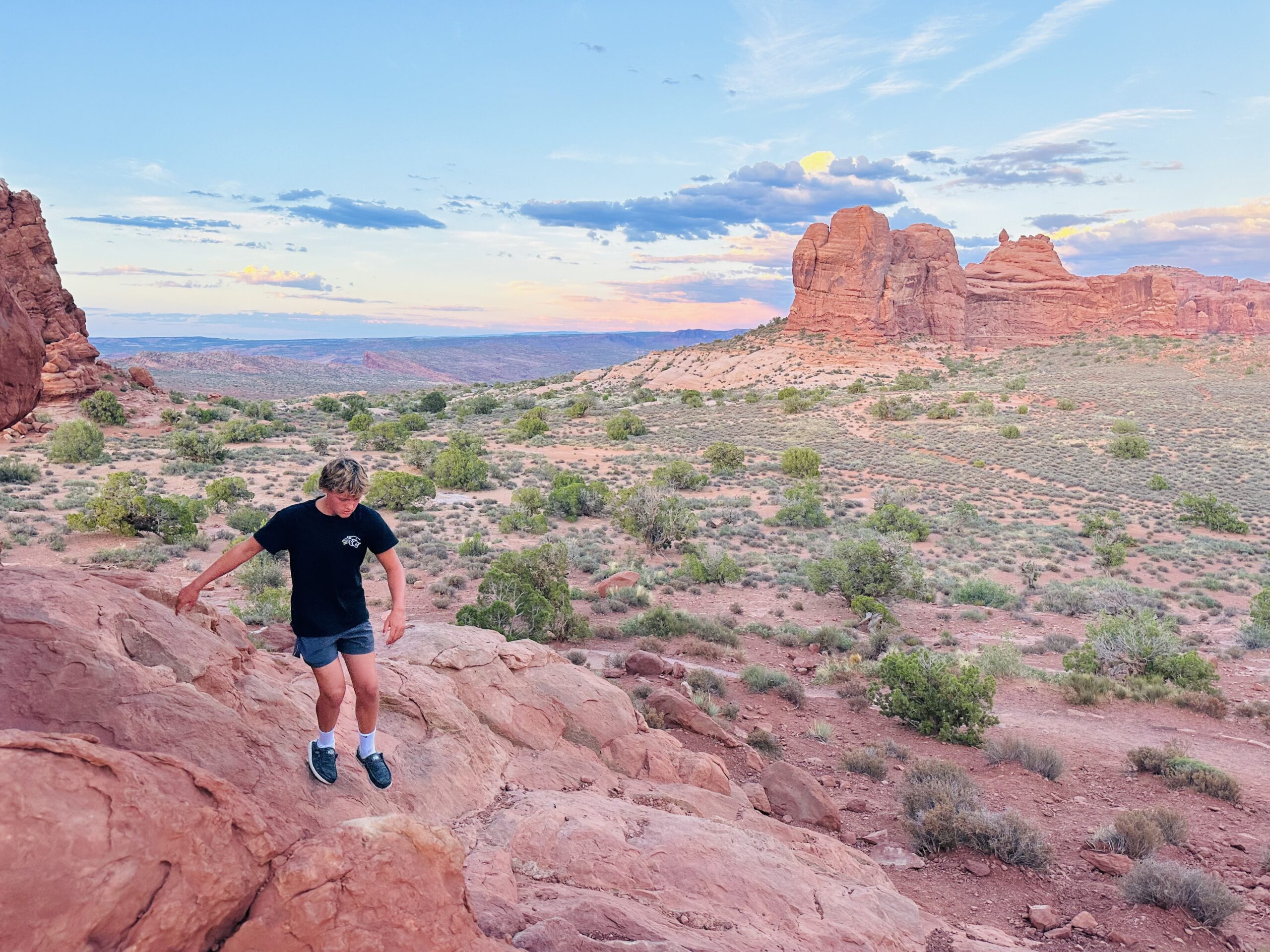
Arches National Park is a geological wonderland that captivates visitors with its incredible diversity of natural stone arches, towering spires, and balanced rocks. Located just outside Moab, this park offers a mix of short hikes and scenic drives, making it accessible for all types of adventurers. Arches is home to over 2,000 natural arches, each offering unique beauty and, of course, plenty of photo opportunities.
Where to Camp
Stay at Sun Outdoors Arches Gateway. Its proximity to the park entrance makes it an ideal base for exploring.
Hikes
- Delicate Arch: A 3-mile roundtrip hike to the park’s most iconic formation.
- Double Arch, Landscape Arch, Balance Rock, The Windows Loop, Tower Arch, Broken Arch: These shorter hikes showcase the park’s diverse geological wonders.
- Timed Entry: Planning is essential as entry requires a timed pass between 7 AM and 4 PM. Passes are easy to secure online, even the evening before your visit.
Dead Horse Point State Park
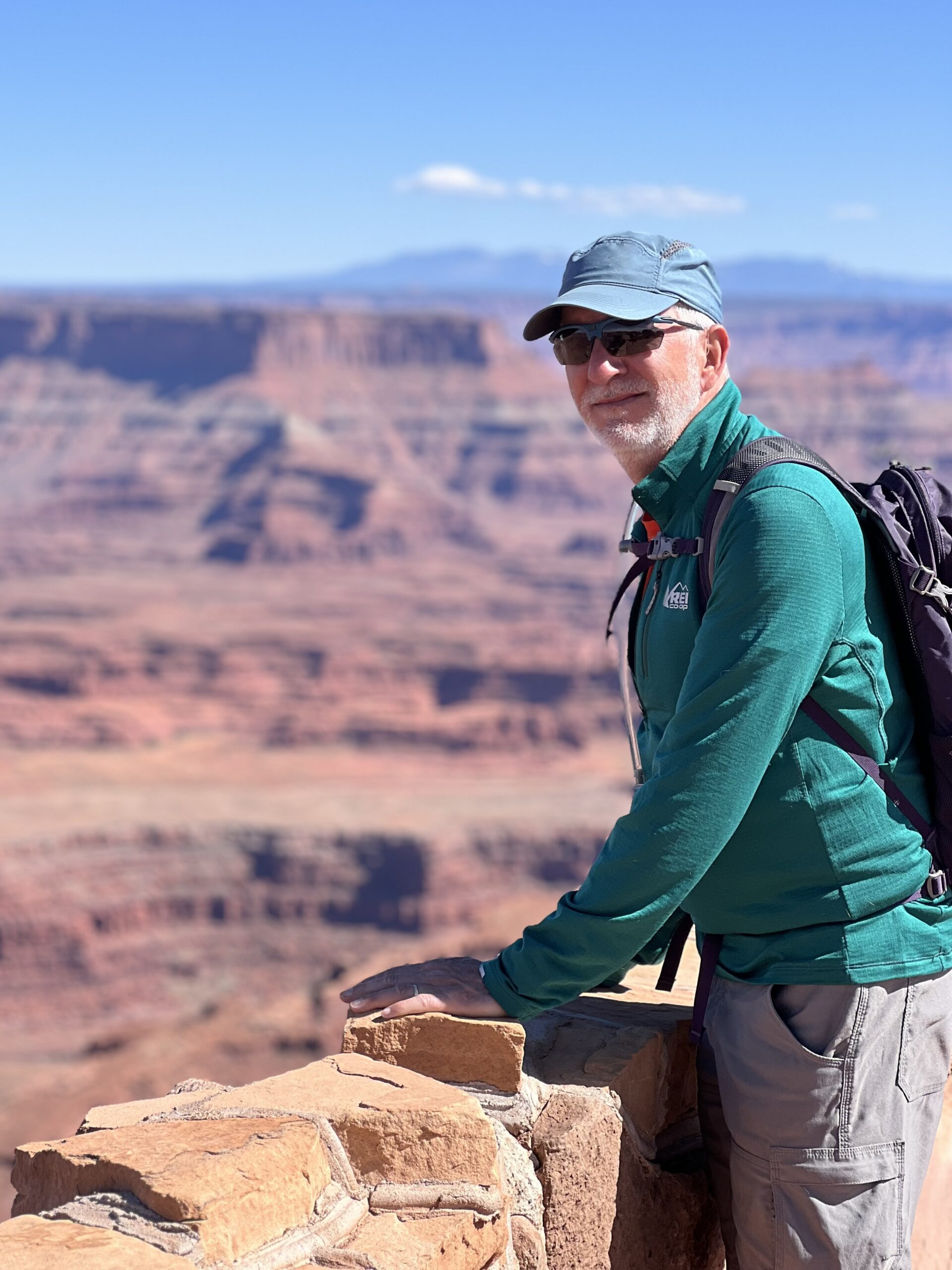
photo by Ellen Broude
Dead Horse Point State Park is a destination known for its panoramic views of the Colorado River’s iconic horseshoe bend and the sprawling canyons below. Visitors are treated to dramatic desert landscapes from several well-placed overlooks along paved walking paths. The park also offers interpretive exhibits that shed light on its natural and cultural history. Additionally, the park is a hub for mountain biking enthusiasts, featuring a network of trails catering to all experience levels. Dead Horse Point’s unique combination of accessibility, outdoor recreation, and stunning scenery makes it a must-visit stop near Moab.
Activities
- Paved Trails: Easy walking paths provide access to the park’s best views.
- Mountain Biking: Dead Horse Point is a mecca for mountain bikers, offering trails for all skill levels.
- The Name: The park’s name originates from a sad tale involving cowboys and wild horses—a haunting reminder of the rugged history of the West.
Canyonlands National Park

photo by Ellen Broude
Canyonlands National Park is divided into four unique districts: Island in the Sky, The Needles, The Maze, and the rivers that run through them. Each district offers distinct experiences, from the sweeping overlooks of Island in the Sky to the colorful spires and challenging backcountry trails of The Needles. Visitors can explore iconic landmarks such as the White Rim Road, a 100-mile off-road journey, or hike the park’s many trails to discover petroglyphs and dramatic geological features. Whether you prefer short day hikes or rugged adventures, Canyonlands delivers unforgettable scenery at every turn.
Hikes
- Lathrop Trail: Recommended by locals, this lesser-known trail takes you through grasslands and slickrock to a stunning canyon overlook.
- Mesa Arch: A short but rewarding trail leading to a natural frame for the vast canyon beyond. This iconic photo spot should not be missed.
Ellen’s Top Tips for Exploring Utah’s Parks
Ellen offered listeners a wealth of practical advice for navigating Utah’s national and state parks. Here are some of her best tips:
- Start Early to Beat the Crowds: Utah’s Mighty 5 parks are incredibly popular, especially during peak seasons. Arriving at trailheads early not only helps you secure parking but also allows you to enjoy the trails in cooler temperatures with fewer people.
- Use E-Bikes in Zion: Renting e-bikes is a game-changer for exploring Zion National Park. E-bikes give you the flexibility to access scenic Canyon Drive without relying on shuttle buses, allowing you to explore at your own pace.
- Combine National and State Parks: Ellen emphasized the value of combining visits to the Mighty Five with nearby state parks. Places like Kodachrome Basin and Goblin Valley offer incredible experiences with fewer crowds and unique geological features.
- Plan for Changing Weather: Utah’s weather can be unpredictable, with temperatures varying greatly between morning and afternoon. Dress in layers and bring plenty of water, sunscreen, and hats for sun protection.
- Reserve Campgrounds Early: Campgrounds, especially those within or near the national parks, fill up quickly. Ellen recommended booking months in advance to secure spots at popular locations like Zion River Resort or Kodachrome Basin State Park.
- Don’t Skip Ranger Programs: Many parks offer free or low-cost ranger-led programs that provide fascinating insights into the history, geology, and wildlife of the area. These are especially great for families.
Campgrounds Reviewed in this Podcast
- Basin Campground at Kodachrome State Park: Offers full hookups, clean facilities, and proximity to stunning hiking trails.
- Zion River Resort: A resort-style campground with full hookups and easy access to Zion National Park.
- Beas Flats Road: A peaceful BLM area near Capitol Reef National Park, perfect for boondocking.
- Goblin Valley Campground: A small campground featuring shaded picnic shelters nestled among unique sandstone formations.
- Sun Outdoors Arches Gateway: Conveniently located near Arches National Park with full hookups and resort-like amenities.
Plan Your Own Utah RV Adventure
Utah’s Mighty 5 and state parks offer an unparalleled combination of natural beauty, outdoor adventure, and scenic camping. Whether you’re boondocking on BLM land or enjoying the amenities of a state park, this trip promises unforgettable memories.
Have you visited Utah’s Mighty 5 or its state parks? Share your favorite experiences in The RV Atlas Facebook group, or listen to the full podcast episode for more travel tips and stories!

